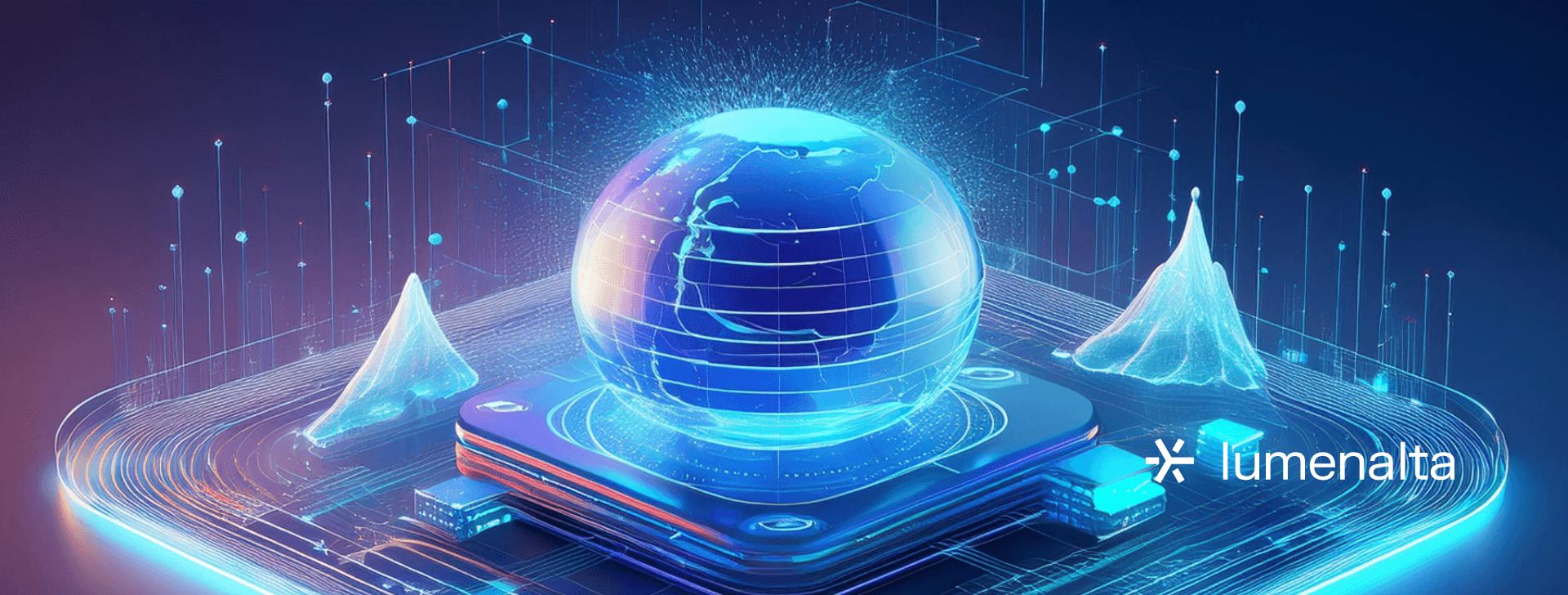

13 natural language processing algorithms
JAN. 14, 2025
6 Min Read
Natural language processing algorithms shape how businesses automate, analyze, and enhance human-to-machine communication.
From text classification to sentiment analysis, these algorithms process and interpret vast amounts of language data, improving customer interactions, streamlining operations, and extracting critical insights. As AI adoption accelerates, choosing the right NLP method directly affects efficiency, accuracy, and business impact. Advancements in NLP have enabled organizations to scale language-based automation across industries, reducing costs while increasing the precision of text-based predictions. Businesses that apply the right algorithms can improve chatbot performance, optimize search functionalities, and refine document analysis. Understanding the differences between NLP approaches ensures companies can make informed choices that maximize operational value and long-term scalability.
Key takeaways
- 1. Natural language processing algorithms automate text-based tasks such as sentiment analysis, entity recognition, and machine translation.
- 2. Rule-based, machine learning-based, and deep learning approaches offer varying levels of accuracy, scalability, and interpretability for text processing.
- 3. Transformer networks have redefined NLP accuracy, improving AI-led automation and enhancing human-computer interactions.
- 4. Businesses apply NLP to chatbots, content recommendations, document analysis, and customer feedback processing for improved efficiency.
- 5. Selecting the right NLP algorithm optimizes text analytics, reduces operational costs, and strengthens AI-powered evaluation.
Importance of natural language processing algorithms in 2025
Natural language processing (NLP) algorithms are essential for improving how machines interpret and generate human language. As artificial intelligence (AI) adoption accelerates, businesses across industries are integrating NLP to automate workflows, enhance evaluation, and personalize user experiences. With advancements in deep learning and generative AI, the ability to process complex language structures with greater accuracy is becoming a standard requirement.
In 2025, NLP algorithms are expected to play a key role in refining conversational AI, improving multilingual capabilities, and enhancing text-based analytics. Businesses in healthcare, finance, and customer service rely on these models to extract insights from unstructured data, streamline operations, and improve response accuracy. As algorithms become more sophisticated, they contribute to cost-effective automation, improved efficiency, and deeper contextual understanding—making them indispensable for organizations seeking long-term growth.
"Selecting the right NLP method can affect efficiency, accuracy, and cost-effectiveness. The primary categories of NLP algorithms include symbolic, statistical, and hybrid approaches, each with distinct advantages and applications."
Natural language processing algorithm types

Algorithms for natural language processing are essential for businesses seeking to automate processes, extract valuable insights, and improve human-computer interactions. As companies integrate artificial intelligence into core operations, selecting the right NLP method can affect efficiency, accuracy, and cost-effectiveness. The primary categories of NLP algorithms include symbolic, statistical, and hybrid approaches, each with distinct advantages and applications. These methods determine how text is analyzed, structured, and interpreted, impacting everything from search engines to customer service automation.
Symbolic algorithms
Symbolic NLP algorithms rely on predefined linguistic rules and structured frameworks to process text. These methods use dictionaries, syntax trees, and grammar rules to analyze language based on strict logical constructs. Businesses that require high precision, such as legal or regulatory compliance teams, often apply symbolic models to maintain consistency in language interpretation. While effective in controlled applications, symbolic algorithms require ongoing manual updates to accommodate new language patterns and may struggle with ambiguous or informal text.
Statistical algorithms
Statistical NLP algorithms apply mathematical models to analyze text based on probability distributions and data-backed patterns. These methods assess word frequencies, sequence structures, and contextual relationships to make predictions about language usage. Applications such as sentiment analysis, automatic translation, and text summarization rely on statistical models to process vast amounts of unstructured data with scalable efficiency. While statistical methods improve accuracy as datasets expand, their performance depends on data quality and requires substantial computational power for optimal results.
Hybrid algorithms
Hybrid NLP algorithms combine symbolic rule-based structures with statistical learning models to enhance accuracy and adaptability. This approach applies linguistic rules to guide text interpretation while allowing machine learning techniques to refine predictions through pattern recognition. Hybrid models are frequently used in speech recognition, chatbots, and content moderation, where structured rules improve reliability while data-led refinements enhance flexibility. Organizations benefit from this method when aiming to balance consistency with the ability to process developing language structures.
Choosing the right NLP algorithm affects processing speed, operational costs, and long-term scalability. Symbolic models provide structured control, statistical approaches offer scalability, and hybrid methods create a balance between precision and adaptability. Businesses that incorporate the appropriate NLP techniques can optimize automation, improve language understanding, and increase the accuracy of AI-powered interactions.
Categories of natural language processing algorithms

Natural language processing algorithms can be grouped into categories based on how they interpret, process, and analyze text. These categories determine the methods for extracting meaning from language, affecting accuracy, scalability, and adaptability in different applications. Businesses rely on these methods to automate customer interactions, improve content recommendations, and extract structured insights from unstructured data. The three primary categories include rule-based, machine learning-based, and profound learning approaches, each offering distinct advantages for specific use cases.
Rule-based methods
Rule-based NLP methods rely on manually defined linguistic rules to process and analyze text. These systems use lexicons, grammar rules, and pattern-matching techniques to extract structured information. Rule-based approaches are commonly applied in applications requiring precision, such as legal text analysis and medical coding. While effective in structured conditions, these methods require continuous updates to accommodate new language variations and may struggle with ambiguous or context-dependent text.
Machine learning-based methods
Machine learning-based NLP methods use statistical models to identify patterns in large datasets and improve language understanding. These approaches train on labeled data to recognize relationships between words, sentences, and contextual elements. Applications such as spam filtering, sentiment analysis, and automated text classification rely on machine learning methods to make accurate predictions. While these models reduce manual rule creation, they require high-quality training data and computational resources for effective implementation.
Deep learning approaches
Deep learning approaches use advanced neural networks to process language with greater accuracy and complexity. These methods analyze large datasets to recognize intricate patterns, improving tasks such as machine translation, speech recognition, and chatbots. Deep learning techniques, such as transformer and recurrent neural networks, enhance contextual understanding and generate more human-like responses. While offering high accuracy and adaptability, deep learning models require significant computational power and extensive datasets to train effectively.
Each NLP category offers unique benefits based on business objectives and data availability. Rule-based methods provide structured control, machine learning approaches enhance pattern recognition, and deep learning models deliver high-accuracy language processing. Selecting the right approach can improve automation efficiency, optimize resource allocation, and strengthen text-based analytics in enterprise applications.
13 natural language processing algorithms

Selecting the right algorithms for natural language processing affects how well AI-powered systems interpret, analyze, and generate human language. Businesses rely on these models to automate customer interactions, extract insights from text data, and improve content recommendations. The following NLP algorithms provide various solutions for topics modeling, text classification, sentiment analysis, and entity recognition.
1. Latent Dirichlet Allocation (LDA)
Latent Dirichlet Allocation is a statistical model for topic modeling, identifying hidden themes in large text datasets. This algorithm assigns words to multiple topics based on probability distributions, making it helpful in organizing documents, summarizing content, and improving search functionalities. Businesses apply LDA in applications such as market research, content categorization, and automated tagging systems.
LDA helps companies process vast amounts of unstructured text, improving knowledge management and content retrieval. Organizations that need to analyze customer feedback, online reviews, or research papers can use this method to extract meaningful patterns and enhance evaluation accuracy.
2. Conditional Random Fields (CRF)
Conditional Random Fields is a machine learning model for sequence prediction tasks such as named entity recognition and part-of-speech tagging. Unlike traditional classification methods, CRF considers contextual relationships between words, improving accuracy in structured text processing.
Industries such as healthcare and finance use CRF to extract key entities from documents, ensuring compliance and improving data classification. Businesses benefit from this algorithm when developing automated document processing systems, chatbots, and virtual assistants.
3. Hidden Markov Model (HMM)
Hidden Markov Model is a probabilistic model that analyzes sequences of observations, making it effective for speech recognition, text generation, and sentiment analysis. This algorithm estimates the likelihood of a word sequence based on previous states, improving contextual predictions.
Organizations use HMM in applications such as automated transcription services, language modeling, and financial market analysis. The ability to process sequential data with statistical accuracy makes HMM a foundational component in many NLP-based automation tools.
4. Naive Bayes
Naive Bayes is a probabilistic classifier that determines the likelihood of a word or phrase belonging to a specific category. This algorithm is widely used in spam detection, sentiment analysis, and text classification due to its simplicity and efficiency.
Businesses rely on Naive Bayes to automate email filtering, categorize customer reviews, and detect fraudulent activities. While effective for many NLP tasks, its performance depends on assumptions of word independence, making it less suitable for highly context-dependent applications.
5. Support Vector Machines (SVM)
Support Vector Machines is a supervised learning model for text classification, sentiment analysis, and document categorization. This algorithm identifies decision boundaries that separate different text classes, improving classification accuracy.
Companies apply SVM to customer service automation, social media monitoring, and risk analysis. Its ability to handle high-dimensional data makes it a reliable choice for NLP applications that require precise text categorization and predictive modeling.
6. Recurrent Neural Networks (RNN)
Recurrent Neural Networks process sequential data by maintaining memory of previous inputs, making them ideal for tasks such as language modeling, text generation, and machine translation. RNNs capture dependencies between words, improving the accuracy of text-based predictions.
Organizations use RNNs for chatbot development, predictive text input, and automated report generation. While powerful, traditional RNNs struggle with long-term dependencies, leading to the development of more advanced variations such as Long Short-Term Memory (LSTM) networks.
7. Convolutional Neural Networks (CNN)
Convolutional Neural Networks, commonly associated with image processing, are also applied to NLP tasks such as text classification, sentiment analysis, and spam detection. CNNs extract key features from text using convolutional layers, improving classification accuracy.
Businesses leverage CNNs to analyze customer feedback, detect fake reviews, and optimize search engine results. Their ability to recognize complex text patterns makes them effective for sentiment-based analytics and content moderation.
8. Transformer Networks
Transformer networks revolutionized NLP by introducing self-attention mechanisms that improve contextual understanding. These models, including architectures such as BERT and GPT, excel in machine translation, text summarization, and conversational AI.
Enterprises use transformers to enhance chatbots, automate customer support, and generate high-quality content. Their ability to process long-range dependencies and contextual relationships makes them critical in modern NLP applications.
9. Word2Vec
Word2Vec is an NLP algorithm that converts words into dense vector representations, capturing semantic relationships between terms. This method improves search recommendations, keyword extraction, and text similarity analysis.
Businesses apply Word2Vec in content personalization, recommendation engines, and knowledge graph development. Its ability to enhance contextual text matching makes it valuable for applications requiring precise language understanding.
10. Bag of Words (BoW)
Bag of Words is a simple NLP technique that represents text as a collection of word occurrences without considering grammar or word order. This approach is widely used in sentiment analysis, text classification, and keyword extraction.
Companies rely on BoW for document indexing, spam detection, and automated tagging. While easy to implement, BoW struggles with understanding contextual meaning, requiring complementary methods for improved accuracy.
11. TF-IDF (Term Frequency-Inverse Document Frequency)
TF-IDF measures word importance within a document relative to a larger corpus, improving information retrieval and keyword extraction. Search engines and text analytics platforms use this method to enhance content ranking and topic identification.
Businesses apply TF-IDF in search engine optimization, document retrieval, and content categorization. This algorithm improves text relevance scoring, optimizing search functionalities across various industries.
12. Named Entity Recognition (NER)
Named Entity Recognition identifies specific entities such as names, locations, and dates within text, improving information extraction accuracy. NER is widely used in customer support automation, knowledge management, and document analysis.
Organizations apply NER to improve chatbot responses, automate legal document processing, and enhance financial data extraction. Its ability to structure unstructured text makes it essential for data-based decision-making.
13. Sentiment Analysis
Sentiment analysis determines the emotional tone of the text, classifying it as positive, negative, or neutral. This method helps businesses analyze customer opinions, monitor brand perception, and optimize content strategies.
Companies use sentiment analysis for social media monitoring, customer feedback analysis, and market research. Understanding user sentiment allows organizations to refine engagement strategies and improve user experiences.
NLP algorithms provide valuable solutions for automating text analysis, improving content understanding, and extracting meaningful insights from language data. Selecting the right algorithm depends on business needs, available data, and performance requirements. Organizations that integrate these methods into their AI strategies can improve operational efficiency, reduce manual processing costs, and enhance human-computer interactions.
Evolution of natural language processing algorithms

Natural language processing algorithms have advanced significantly, moving from rule-based systems to deep learning models capable of understanding complex language patterns. Early methods relied on manually defined rules and structured grammar models, limiting adaptability and requiring extensive human intervention. These symbolic approaches worked well in structured settings but struggled with informal or ambiguous text.
The introduction of statistical models improved NLP by incorporating probability-based predictions, allowing algorithms to learn from large datasets. Methods such as Naive Bayes and Hidden Markov Models brought automation to text classification, speech recognition, and sentiment analysis. As computing power increased, machine learning methods further enhanced NLP by training models on vast amounts of textual data, reducing the need for manual rule engineering.
Deep learning reformed NLP by introducing neural networks capable of capturing intricate language relationships. Transformer-based models, such as BERT and GPT, set new standards for contextual understanding, granting AI to generate human-like text, improve translations, and refine chat-based interactions. These advancements have increased automation accuracy, reduced processing times, and expanded NLP applications across industries. Businesses that incorporate modern NLP techniques can optimize customer interactions, extract deeper insights from text, and improve AI-led language understanding.
"Deep learning transformed NLP by introducing neural networks capable of capturing intricate language relationships. Transformer-based models, such as BERT and GPT, set new standards for contextual understanding, allowing AI to generate human-like text, improve translations, and refine chat-based interactions."
Choosing the right natural language processing algorithm

Selecting the most effective natural language processing algorithm depends on the complexity of the task, available data, and required accuracy. Businesses must consider whether they need a rule-based, machine learning, or deep learning approach to balance interpretability, scalability, and performance.
For structured text processing, rule-based methods offer precision and control, making them ideal for regulatory compliance, grammar checking, and predefined language tasks. These approaches work best when language patterns are stable and do not require extensive contextual adaptation. However, they struggle with flexible language structures and require ongoing manual updates.
Machine learning-based NLP models improve automation by recognizing text patterns and classifying data with minimal human intervention. Algorithms such as Naive Bayes, support vector machines, and recurrent neural networks provide scalable solutions for tasks such as sentiment analysis, spam filtering, and document categorization. These models can benefit businesses that need accurate text classification without complex training requirements.
Deep learning approaches, including transformer networks and convolutional neural networks, provide high accuracy for complex NLP tasks such as machine translation, chatbots, and voice recognition. These models process vast amounts of text data to improve contextual understanding, delivering more natural and human-like responses. While highly effective, deep learning models require significant computational resources and large datasets to train effectively.
Choosing the right NLP algorithm affects processing efficiency, response accuracy, and operational costs. Businesses that align NLP methods with their specific requirements can improve automation, enhance language interpretation, and extract valuable insights from text data, strengthening AI-led interactions across various applications.
Natural language processing reshapes businesses' interactions with data, customers, and automation. With the right algorithms, companies can achieve greater efficiency, improve language comprehension, and unlock valuable insights from text. At Lumenalta, we develop tailored AI solutions to enhance NLP capabilities while aligning with your strategic objectives. Let’s build more competent, more scalable automation together.
Table of contents
- Importance of natural language processing algorithms in 2025
- Natural language processing algorithm types
- Categories of natural language processing algorithms
- 13 natural language processing algorithms
- 1. Latent Dirichlet Allocation (LDA)
- 2. Conditional Random Fields (CRF)
- 3. Hidden Markov Model (HMM)
- 4. Naive Bayes
- 5. Support Vector Machines (SVM)
- 6. Recurrent Neural Networks (RNN)
- 7. Convolutional Neural Networks (CNN)
- 8. Transformer Networks
- 9. Word2Vec
- 10. Bag of Words (BoW)
- 11. TF-IDF (Term Frequency-Inverse Document Frequency)
- 12. Named Entity Recognition (NER)
- 13. Sentiment Analysis
- Evolution of natural language processing algorithms
- Choosing the right natural language processing algorithm
- Common questions about NLP algorithms
Common questions about NLP algorithms
What are natural language processing algorithms used for?
How do NLP algorithms improve AI-backed automation?
What is the difference between rule-based and machine learning NLP methods?
Which NLP algorithm is best for sentiment analysis?
How do transformer networks improve NLP accuracy?
Want to learn how NLP can bring more transparency and trust to your operations?

















